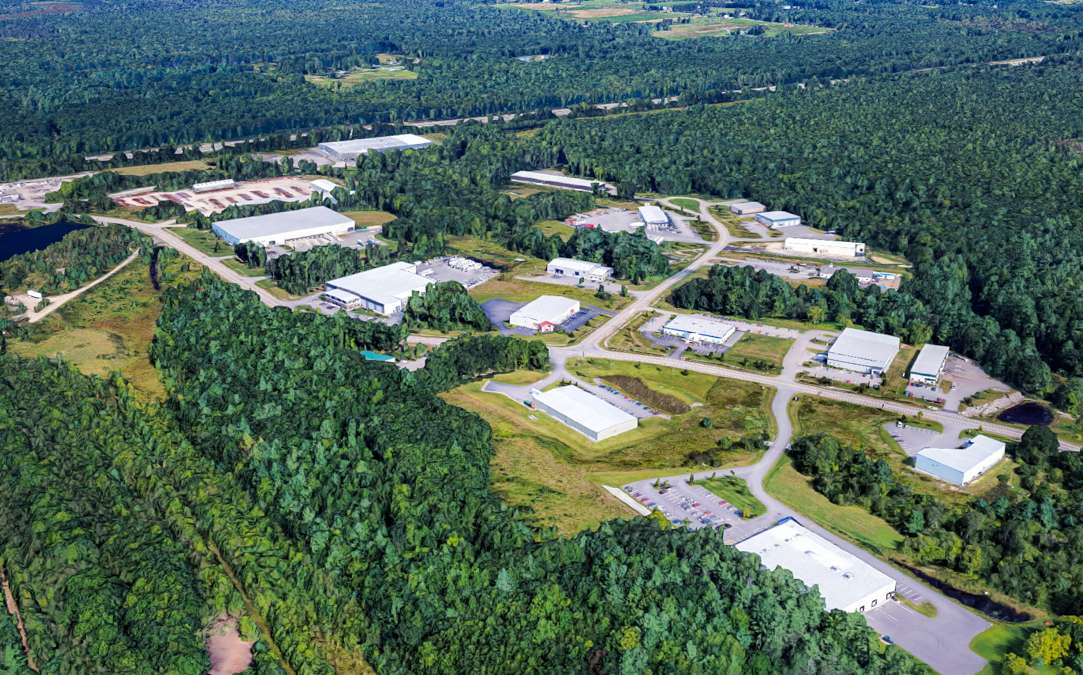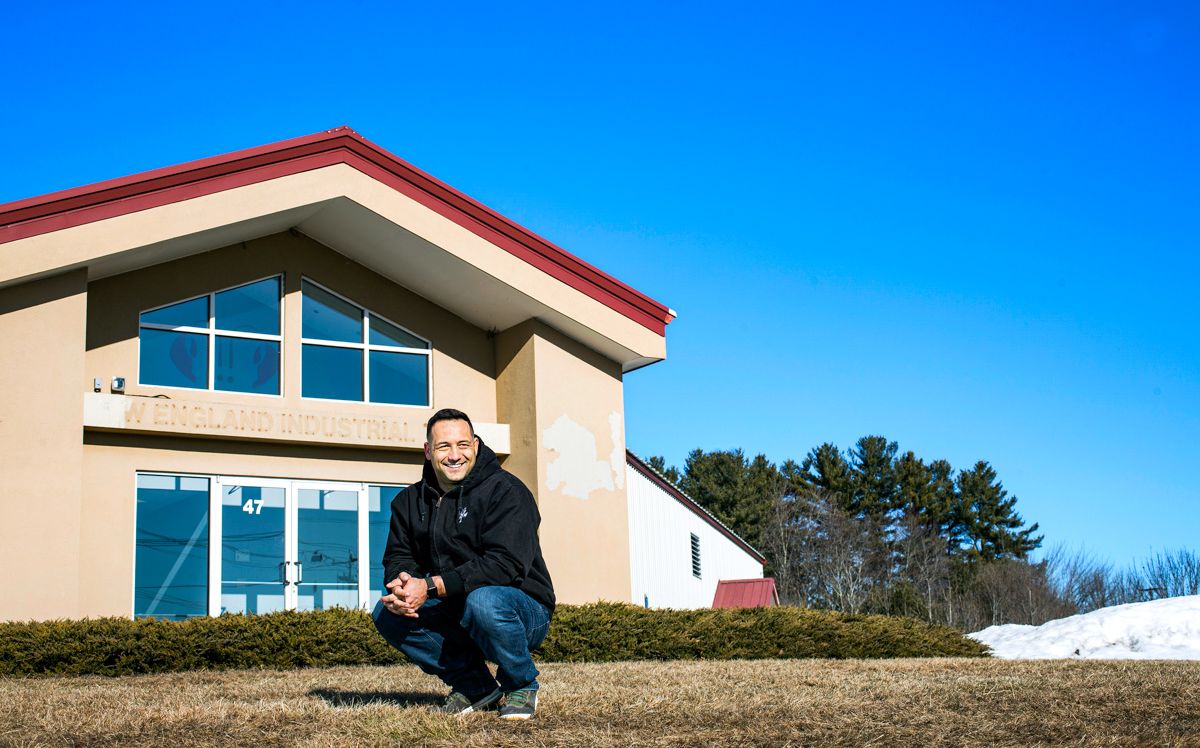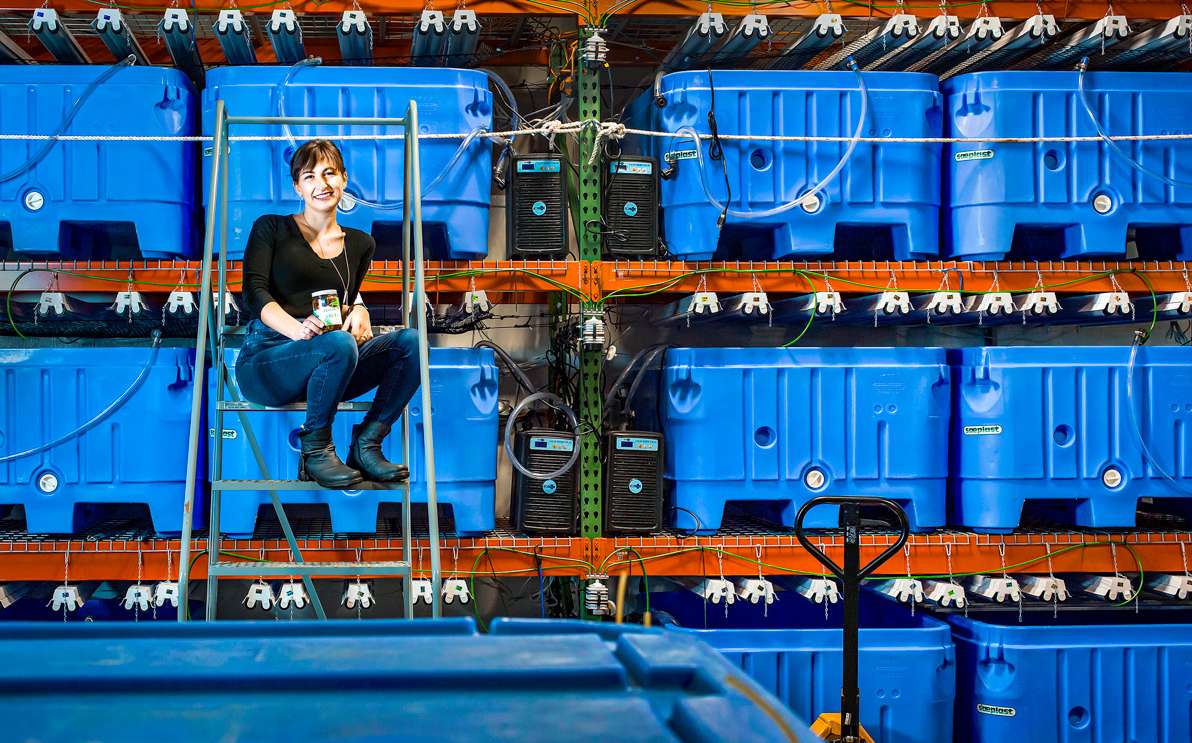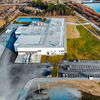
Processing Your Payment
Please do not leave this page until complete. This can take a few moments.
- News
-
Editions
View Digital Editions
Biweekly Issues
- December 15, 2025
- December 1, 2025
- Nov. 17, 2025
- November 03, 2025
- October 20, 2025
- October 6, 2025
- + More
Special Editions
- Lists
- Viewpoints
-
Our Events
Event Info
Award Honorees
- Calendar
- Biz Marketplace
Saco's seafood cluster: Location, affordable space are netting new businesses
 Photo / Tim Greenway
Julian Klenda, founder and owner of Maine Lobster Now, is planning a move from Portland to Saco as an affordable way to accommodate the rapidly expanding delivery service.
Photo / Tim Greenway
Julian Klenda, founder and owner of Maine Lobster Now, is planning a move from Portland to Saco as an affordable way to accommodate the rapidly expanding delivery service.
The area in and around Saco Industrial Park is becoming a seafood cluster, as more seafood processors and distributors look to relocate or grow their businesses there.
Transportation access, available and affordable real estate and the city’s business-friendly climate are the chief attractions, businesses there told Mainebiz. Incentives like community development grants and an Opportunity Zone can sweeten the pot for investors.
Most immediately, Maine Lobster Now plans to renovate an available building in the industrial park, with the goal to relocate from Portland this summer.
“People are moving to Saco,” says Julian Klenda, founder and owner of the rapidly expanding delivery service. “It’s affordable for residents, so you have workforce readily available. And Saco is also close enough to Portland where you’re still able to grab that workforce. It’s right off the interstate, so your trucking is good to go. Saco is turning into a pretty affordable alternative for a lot of businesses.”
The city is welcoming them with open arms.
“It doesn’t come as a surprise that businesses want to locate in the Route 1 corridor, because of available infrastructure, because it’s in an Opportunity Zone, because of its accessibility to the interstate, and because of the high quality of life in Saco,” says the city’s communications director, Emily Roy.
In addition, Roy says, land and buildings are generally more affordable than Portland. And Saco provides easy access to Portland to the north and Portsmouth, N.H., and Boston to the south. For international markets, Saco is an hour and 40 minutes from Logan International Airport.

“We have the Saco Transportation Center, so we have train access for both freight rail and passenger rail,” Roy says. “We have different housing options,” including multi-family and single-family housing, conversion of Saco Island Mill Building 4 into condominiums, and apartment rental opportunities.
Can-do
When Shawn McEwen and Morey Highbarger were looking to move their growing startup, Sea Salt Lobster Co., from McEwen’s Kennebunk home, they identified Saco as a likely prospect because of an available warehouse in the industrial park. For a seafood processor, floor drains are a key selling point.
“There wasn’t a lot of that space around,” says Highbarger.
Starting as a seafood brokerage in 2009, Sea Salt grew into wholesale and retail in 2010, when it leased the building and built a tank system to buy and sell large quantities of live lobsters.
In 2014, Sea Salt Lobster invested in land on Route 1 and built a new plant, with a restaurant and retail fish market out front, to accommodate continued growth. In 2019, domestic and international shipments of live and frozen lobster and other products earned $27 million in gross revenues, 10% to 15% above 2018, and prompting plans for further expansion.
The owners became familiar with the city’s business-friendly climate when they were transitioning from the lease to new construction. Highbarger says city officials have a “can-do, let’s make this work” attitude.
“I think a lot of other municipalities tend to find reasons why you can’t do something,” he says. “Saco looked at us and felt they wanted us in the community.”
McEwen says the welcome extended well beyond economic development outreach.
“The mayor would come here with planning or code enforcement and talk with us about our business, about our plans, about anything we needed,” he says. “They were proactive in reaching out.”
Saco has built that attitude into its mission, says Denise Clavette, director of planning and development. The city streamlined its application process by getting developers and city departments into one meeting.
“The review process shortens the development timeframe, because instead of essentially going back and forth between their design and engineering team and city staff, it’s all done in one meeting,” she says.
Friendly sewer department
Those floor drains and related infrastructure are significant considerations in the seafood world. Luke Holden, co-owner of Luke’s Lobster Seafood Co., illustrates the point.
Luke’s, which has restaurants in the U.S. and Asia, opened its processing plant in Saco in 2012 to supply its own sites but also other restaurants and retailers, including Whole Foods.
It found space where it could grow: a 50,000-square-foot production site formerly occupied by Tom’s of Maine and, before that, juice maker Fresh Samantha.
Initially, Luke’s took over just a quarter of the building, or 12,500 square feet. Today, production fills 40,000 square feet. Last year, Luke’s processed 7 million pounds of lobster and other shellfish.
Holden and co-owner Ben Conniff chose the industrial park to lease, then buy, an existing building for their processing plant for a couple of reasons. First, the 50,000-square-foot food production facility was sitting empty. But because of its previous uses, it was in good shape for what they had in mind.
“Right before we purchased the property, Tom Chappell from Tom’s of Maine was in the space,” says Holden. “They left great infrastructure behind, like a high-pressure boiler that otherwise costs a lot of money and takes a long time to get licensed and installed.”
Less obvious but most significant for seafood processing was Saco’s “friendly sewer department,” he says.
The plant uses 25,000 gallons of water a day. Wastewater discharge includes consideration of things like dissolved oxygen and suspended solids.
“It takes quite a treatment facility to handle that volume on a daily basis,” Holden says. “You need proper treatment that can handle and process our discharge volume. It’s a measure of both scale and sophistication. Saco has a wonderful sewer department that has the ability to scale with the extra volume.”
Transportation logistics
Nearly across the street from Luke’s is Atlantic Sea Farms. Founded in 2009 as the nation’s first commercial kelp farm off Portland, the company in 2017 expanded into a 6,000-square-foot processing facility in Saco, where it partners with kelp-growing operations along the Maine coast and creates products like kelp kimchi and kelp sauerkraut, available for the food service industry nationwide and retail sales in the Northeast.
During the harvest from April through June, staff picks up kelp from farmers along the coast, hauling perhaps 50,000 pounds per day from as far as Eastport. Once in Saco, it’s frozen, then processed. The plant also houses a nursery producing kelp seed that’s distributed free to farmers. Production has grown steeply. In 2018, the facility processed 40,000 pounds of kelp. In 2019, it was 240,000 pounds. This year, the harvest is expected to be 650,000 pounds.
“There was a good building here that worked perfectly for processing,” says Brianna Warner, president and CEO of Atlantic Sea Farms. “It’s right on the I-95 corridor, so it’s easy for distributors to pick up. It was available space and the type of building we needed.”
Highway proximity is key.

McEwen at Sea Salt Lobster says its fleet of four trucks, moving two shipments a day, can easily hop on the interstate for a quick run to Boston.
Maine Lobster Now’s Klenda ships UPS and FedEx for flights out of Portland, Manchester, N.H., Boston’s Logan.
“Lobsters only live so long when they’re out of the water,” he says. “Sometimes there are limitations with transit time.
Klenda’s plan to move to Saco was forced in part by the difficulty of expanding from Maine Lobster Now’s site in Portland. Last year, the company shipped 60,000 packages nationwide last year, breaking $10 million in gross sales, he says.
“Trying to find any building over 10,000 square feet in Portland is limited or very expensive,” Klenda says.
A new location had to be close enough to the existing facility to retain employees and at least the same size with room for expansion. To beat the high cost of new construction, criteria for an existing building included three-phase power and access to sewer, water, natural gas and internet. He found what he needed in Saco’s industrial park, a 17,348-square-foot building originally developed by New England Industrial. Perks include loading docks, ample height clearance and acreage for expansion. He’s now in the permitting stage and hopes to be operational by July.
Klenda views Saco’s seafood cluster as a boon for the city.
“It’s a lot of jobs,” he says.
Incentives
Another recent arrival is Ready Seafood, which last September opened its new $15 million, 52,000-square-food facility on Route 1 as the largest lobster processing operation in Maine.
Construction was funded in part by investors who received tax breaks under a federal program that designated Saco as an Opportunity Zone.
Maine Technology Institute’s Maine Technology Asset Fund invested $2.5 million in the plant as well. And Ready has a credit enhancement agreement with the city of Saco and received a federal Community Development Block Grant for construction of the plant.
Founded by John and Brendan Ready in 2004, the company buys and sells over 15 million pounds of live and processed lobster annually, runs three packing and grading shifts 24/7, and sources millions of pounds of live lobster annually from the Gulf of Maine to the Canadian Maritimes, according to the company’s website. The Saco plant has state-of-the-art cooking and freezing technology, including a high-pressure processing machine that produces raw lobster meat, pressure-extracted without heat, then flash frozen.
Synergies
Warner sees benefits to being part of an industry cluster.
“We work with some of our neighbors on sharing resources, space and transportation,” she says.
When Ready Seafood, trucks lobster to a cold storage facility in Gloucester, Mass., it allows Atlantic Sea Farms to load kelp for the trip. Atlantic has been able to use Luke’s machinery.
“It helps to be in the ecosystem,” Warner says.
“As lobster dealers, there are times when we need each other,” agrees McEwen. “We extend that industry helping hand when necessary. If someone has a truck issue or needs ice, we would be able to connect with them.”
Diverse industries
Saco is in the midst of diversifying its industry recruitment. A market analysis is underway to identify potential sectors, says Saco Director of Planning and Development Denise Clavette.
Route 1 has available land on the market for development and the city has acquired two separate sites for future business and industrial park expansion, with lot sizes based on company needs.
“We’ve had inquiries from people for 20 acres and 60,000-square-foot buildings to 2 acres and 4,000-square-foot buildings,” she says.
Mainebiz web partners

The Giving Guide
The Giving Guide helps nonprofits have the opportunity to showcase and differentiate their organizations so that businesses better understand how they can contribute to a nonprofit’s mission and work.
Learn More
Work for ME
Work for ME is a workforce development tool to help Maine’s employers target Maine’s emerging workforce. Work for ME highlights each industry, its impact on Maine’s economy, the jobs available to entry-level workers, the training and education needed to get a career started.
Learn More
Groundbreaking Maine
Whether you’re a developer, financer, architect, or industry enthusiast, Groundbreaking Maine is crafted to be your go-to source for valuable insights in Maine’s real estate and construction community.
Learn more-
The Giving Guide
The Giving Guide helps nonprofits have the opportunity to showcase and differentiate their organizations so that businesses better understand how they can contribute to a nonprofit’s mission and work.
-
Work for ME
Work for ME is a workforce development tool to help Maine’s employers target Maine’s emerging workforce. Work for ME highlights each industry, its impact on Maine’s economy, the jobs available to entry-level workers, the training and education needed to get a career started.
-
Groundbreaking Maine
Whether you’re a developer, financer, architect, or industry enthusiast, Groundbreaking Maine is crafted to be your go-to source for valuable insights in Maine’s real estate and construction community.
ABOUT
NEW ENGLAND BUSINESS MEDIA SITES
No articles left
Get access now
In order to use this feature, we need some information from you. You can also login or register for a free account.
By clicking submit you are agreeing to our cookie usage and Privacy Policy
Already have an account? Login
Already have an account? Login
Want to create an account? Register
Get access now
In order to use this feature, we need some information from you. You can also login or register for a free account.
By clicking submit you are agreeing to our cookie usage and Privacy Policy
Already have an account? Login
Already have an account? Login
Want to create an account? Register







0 Comments